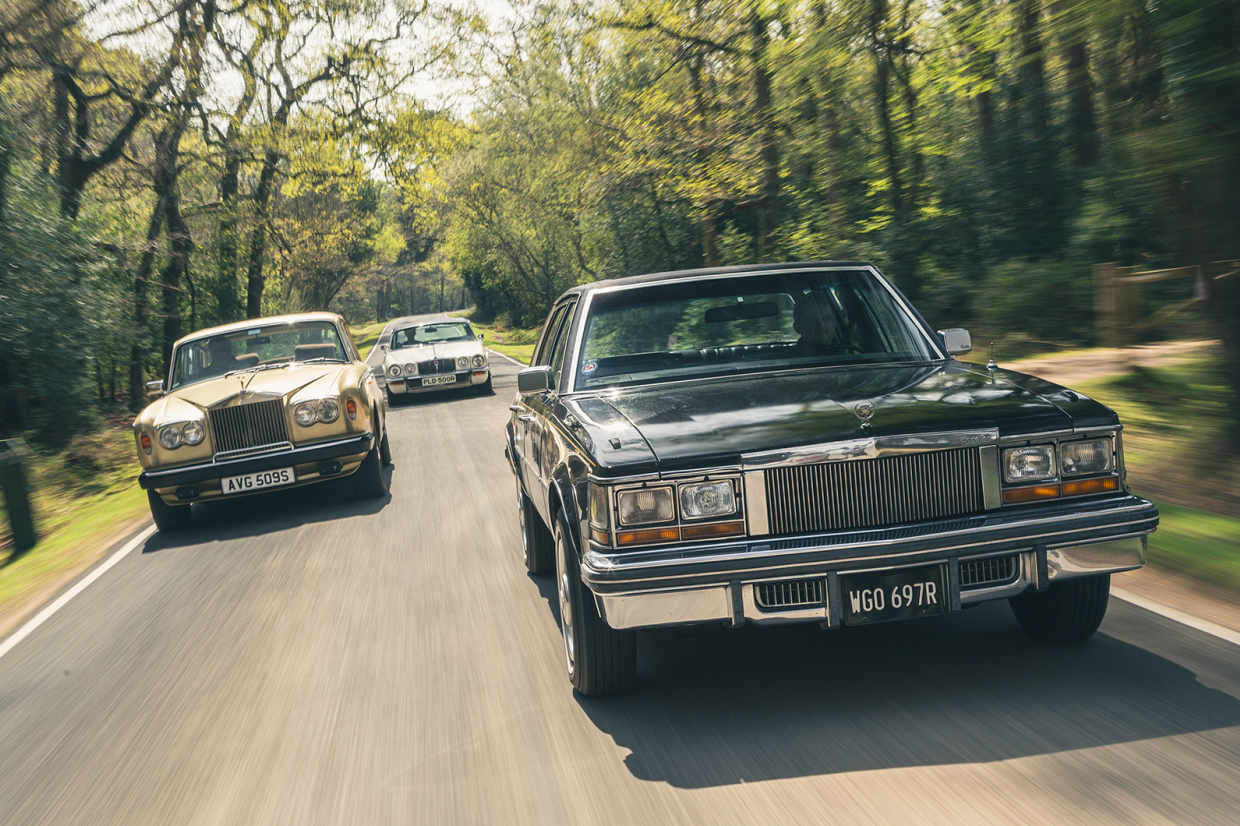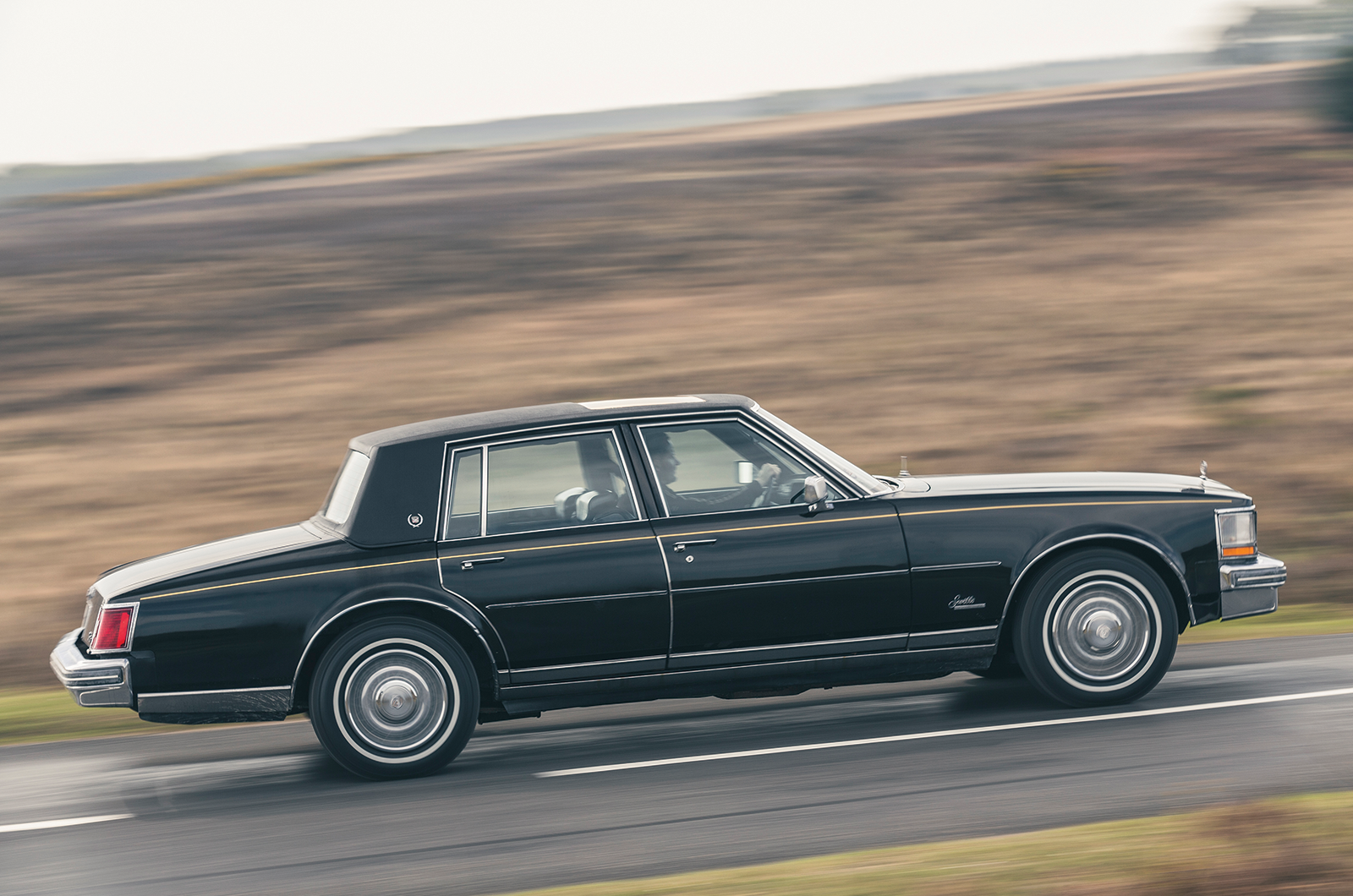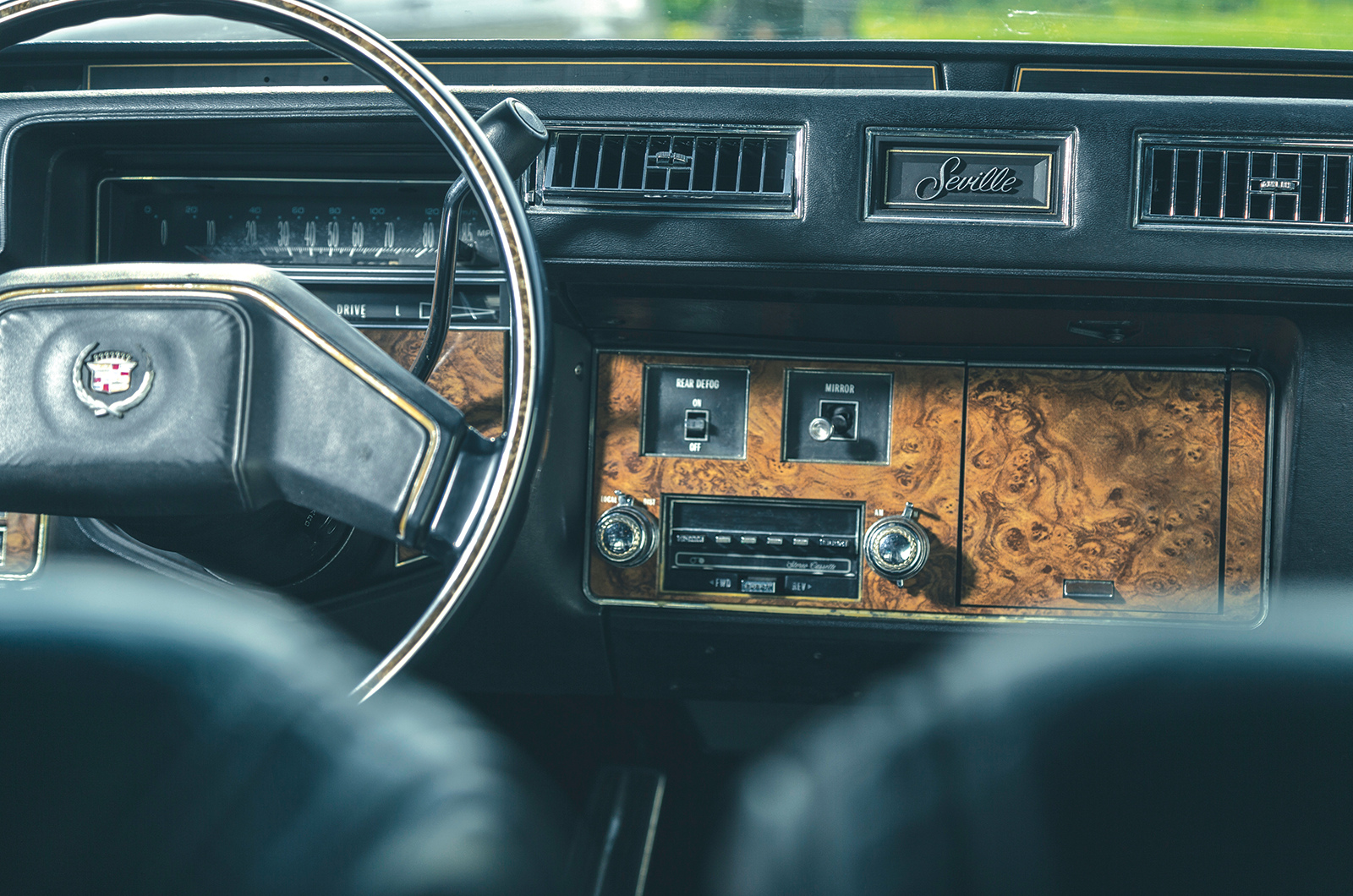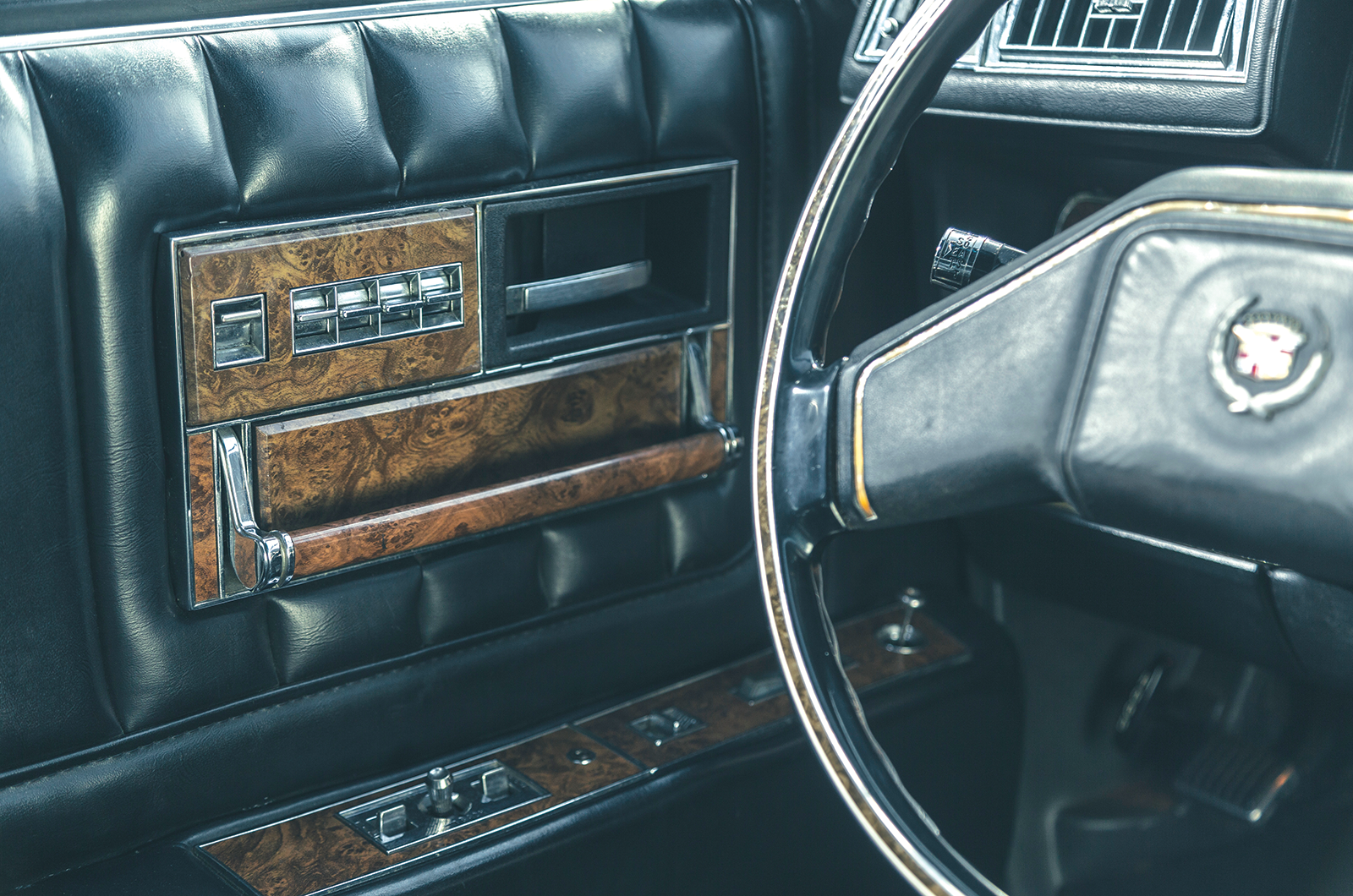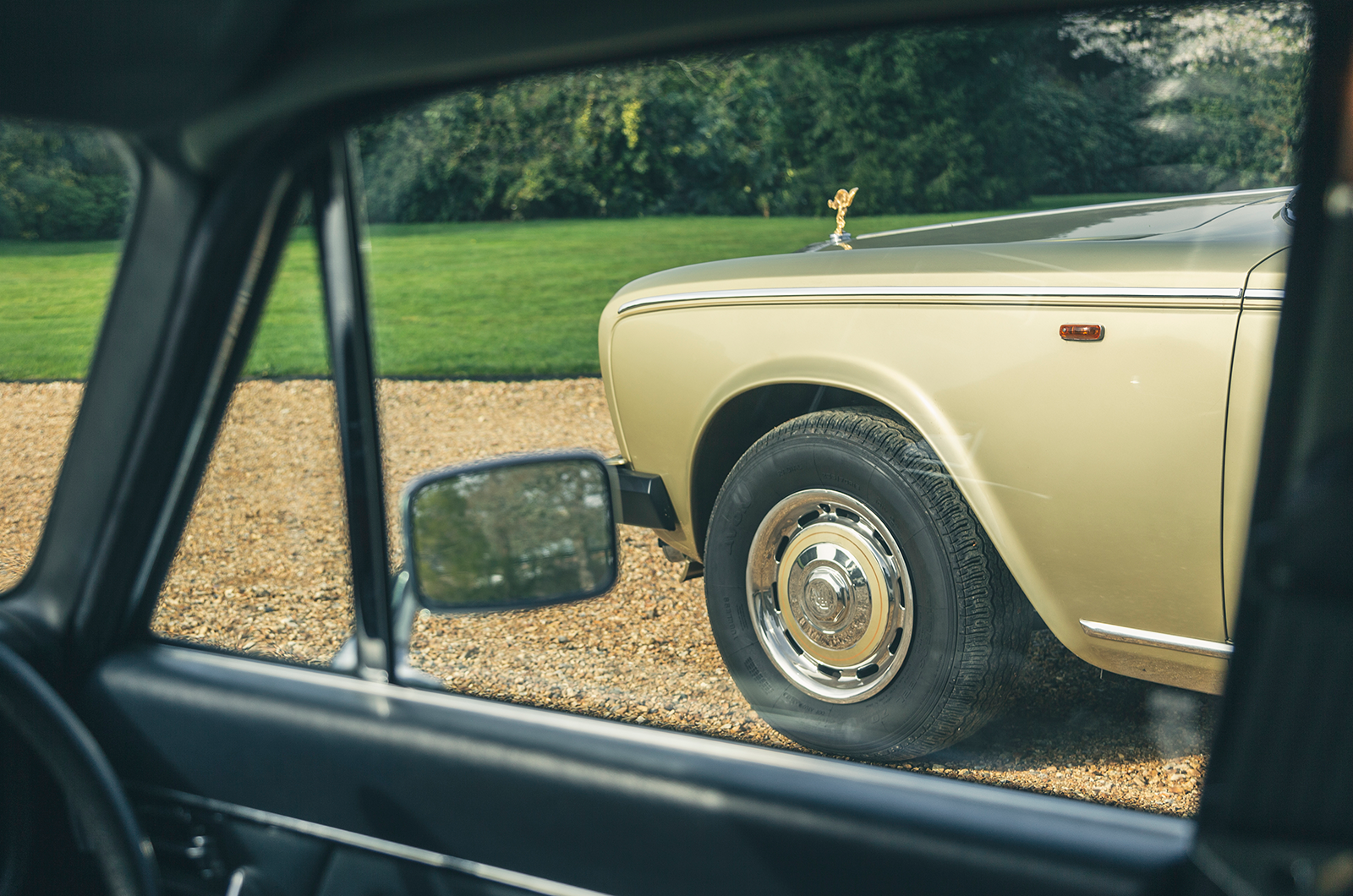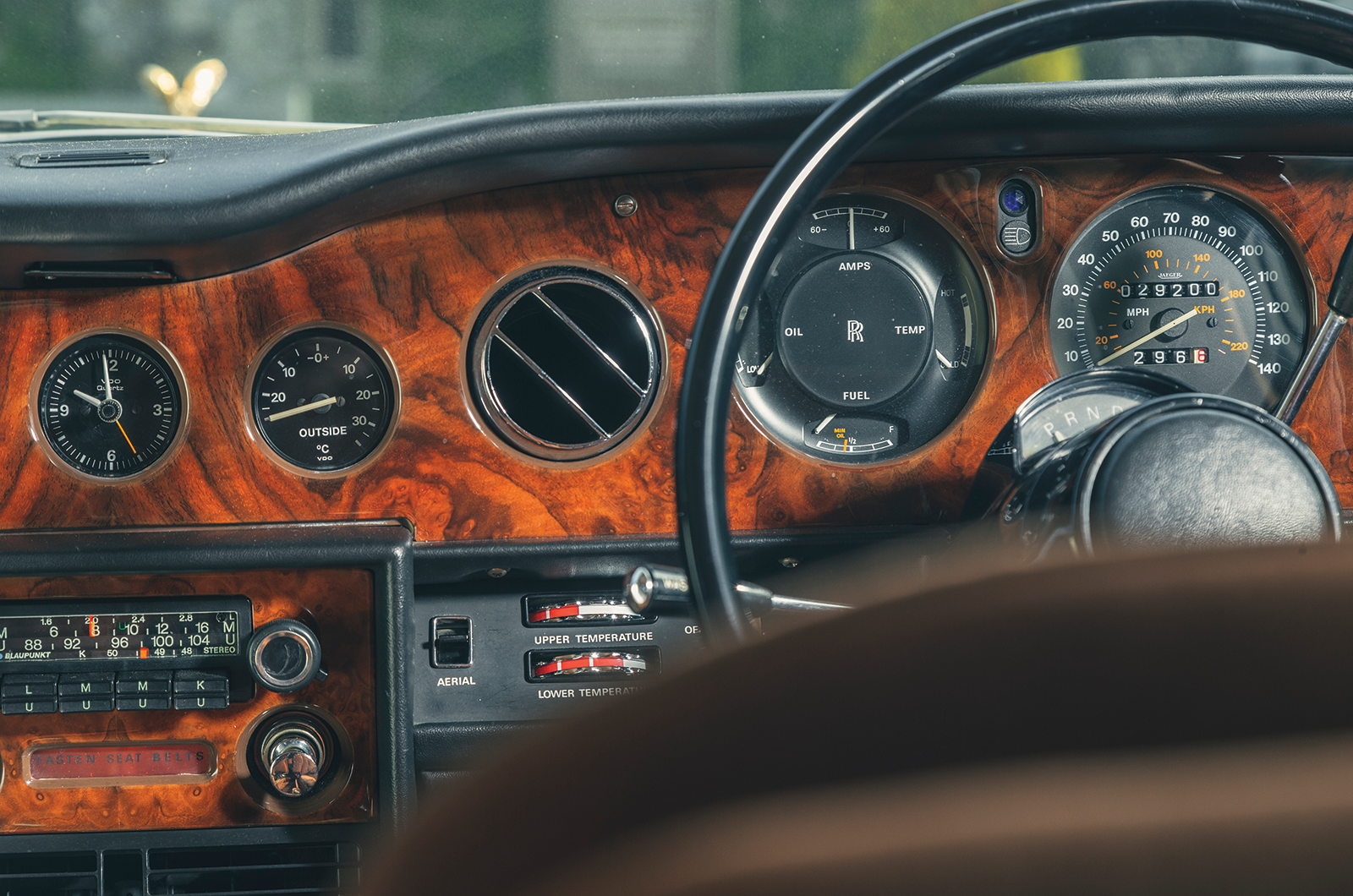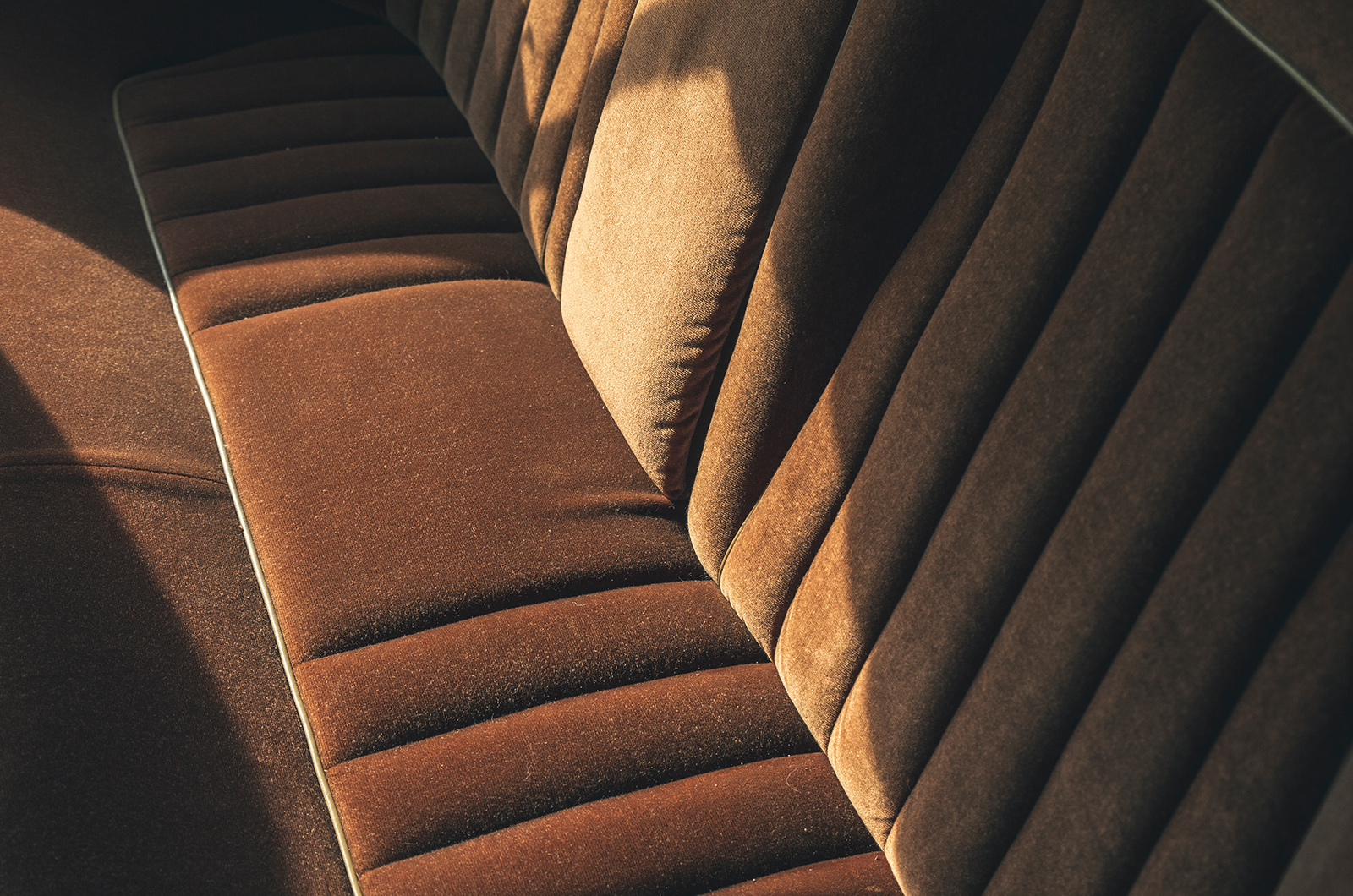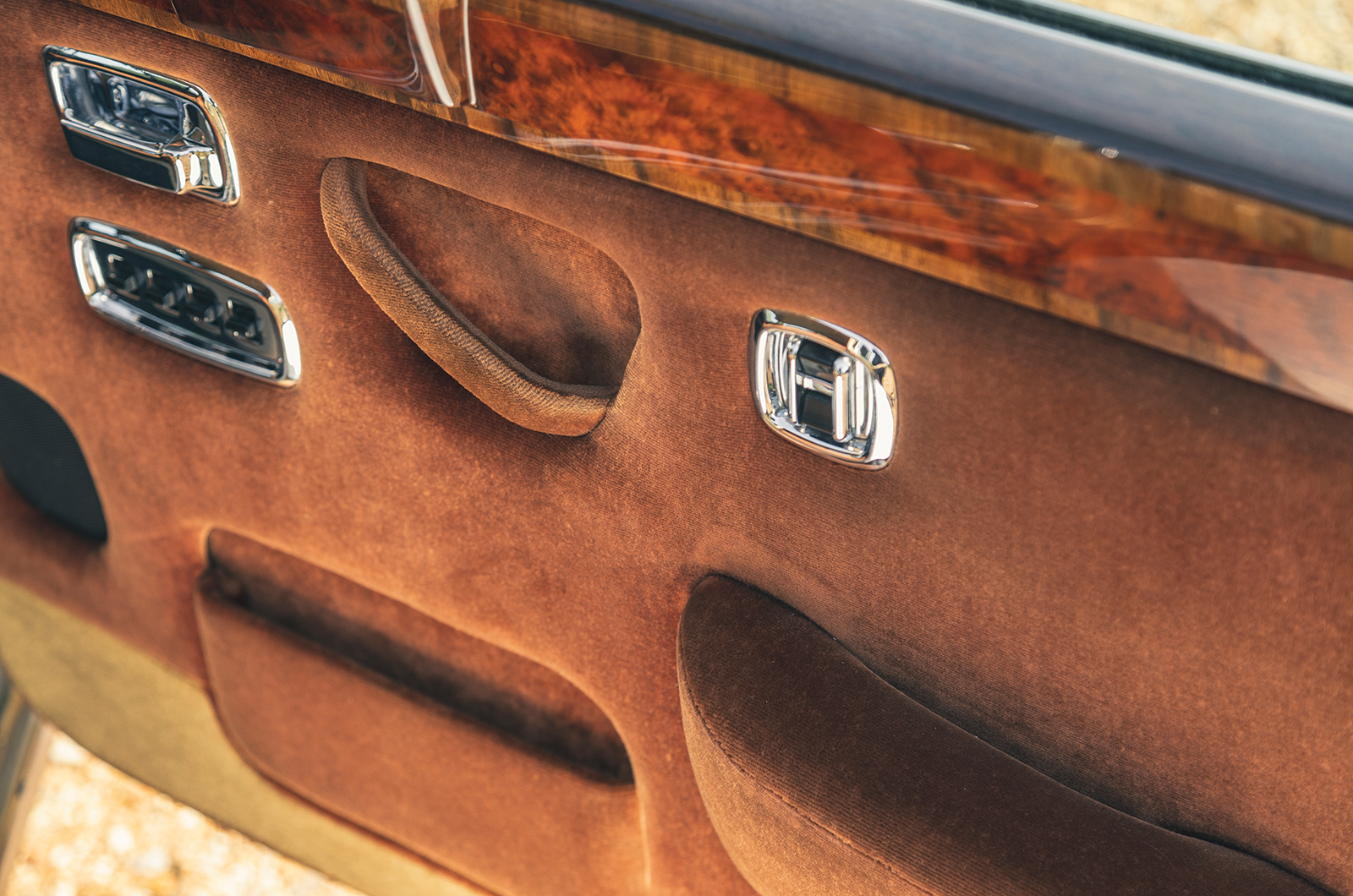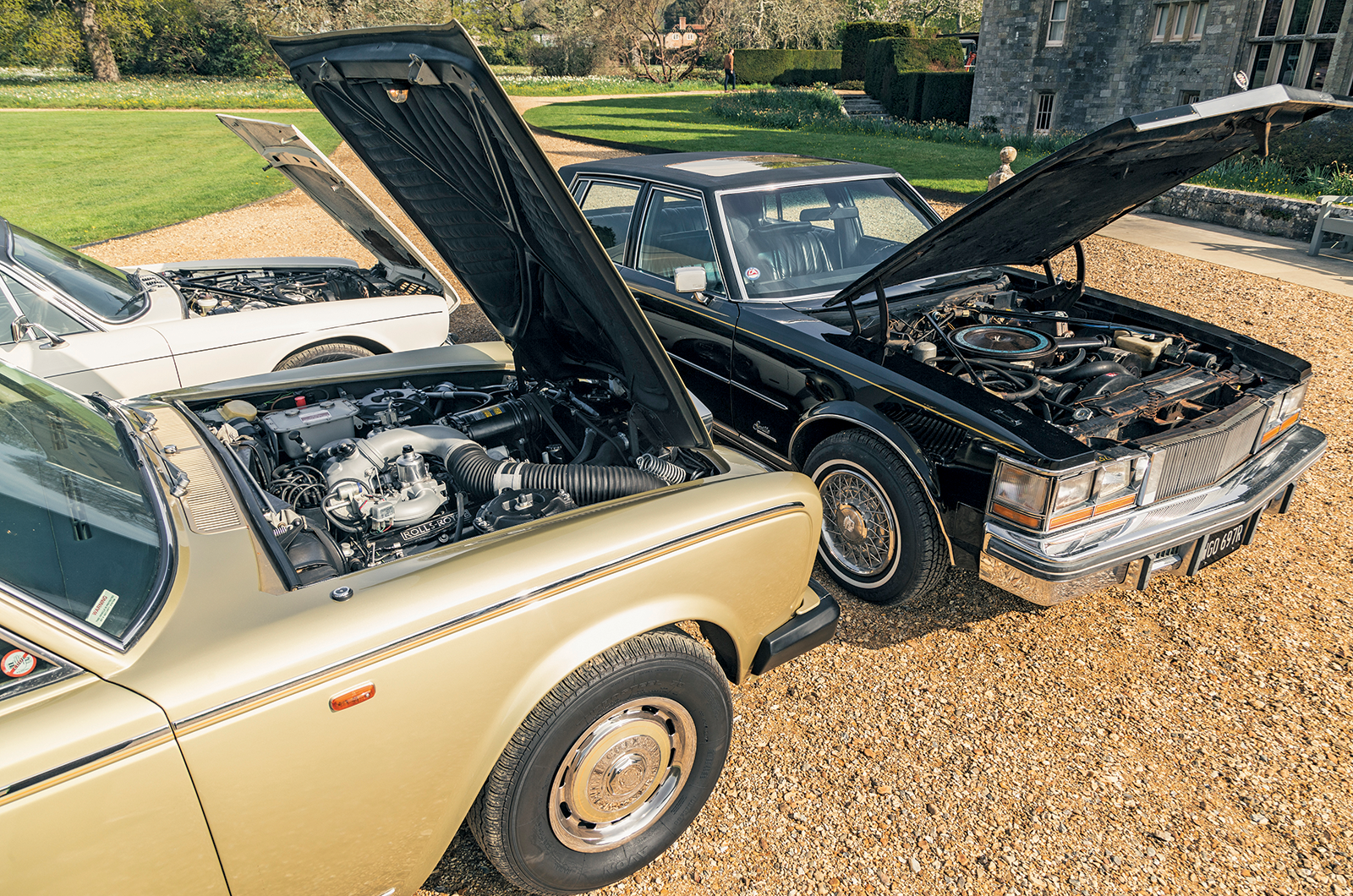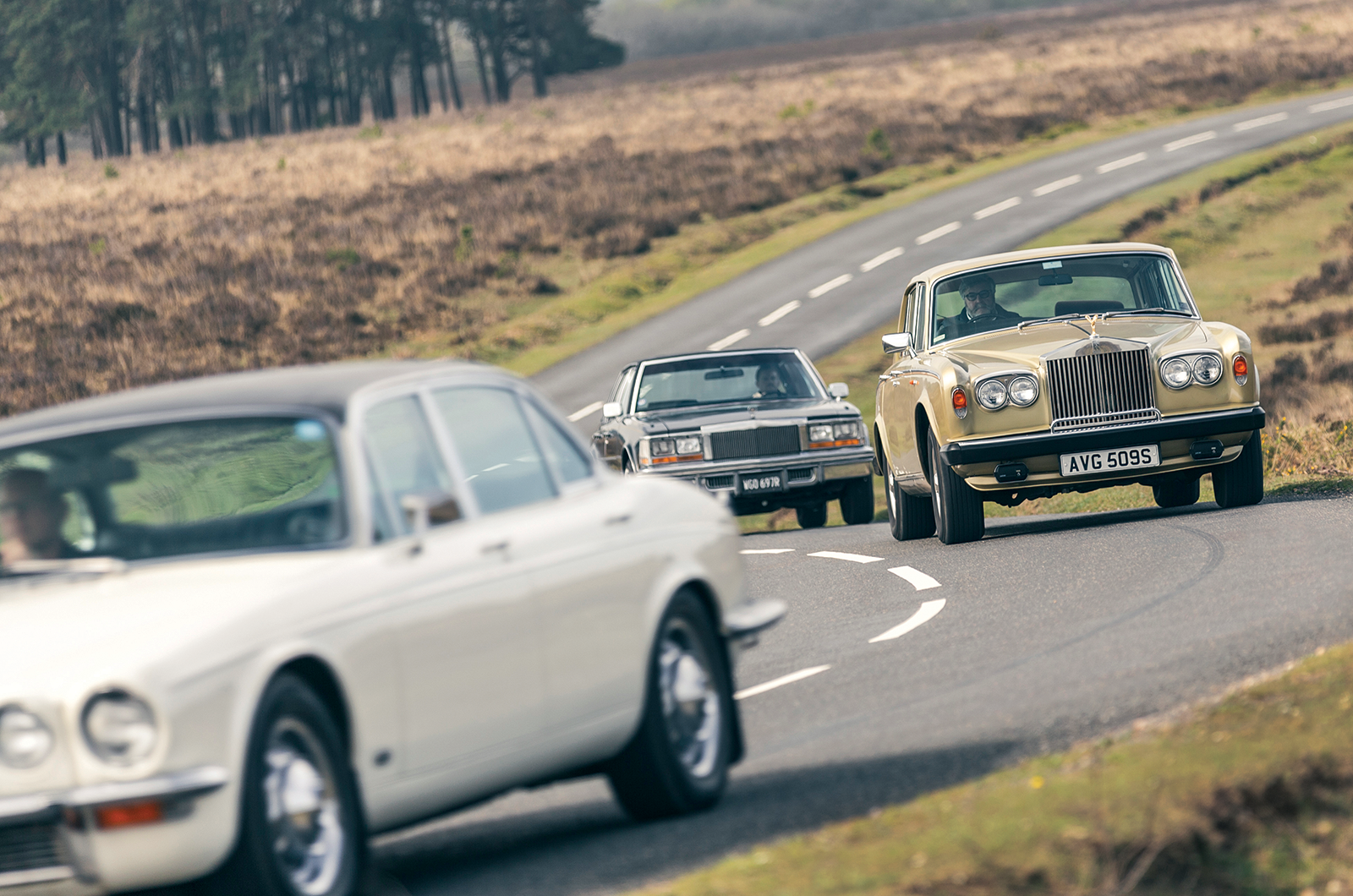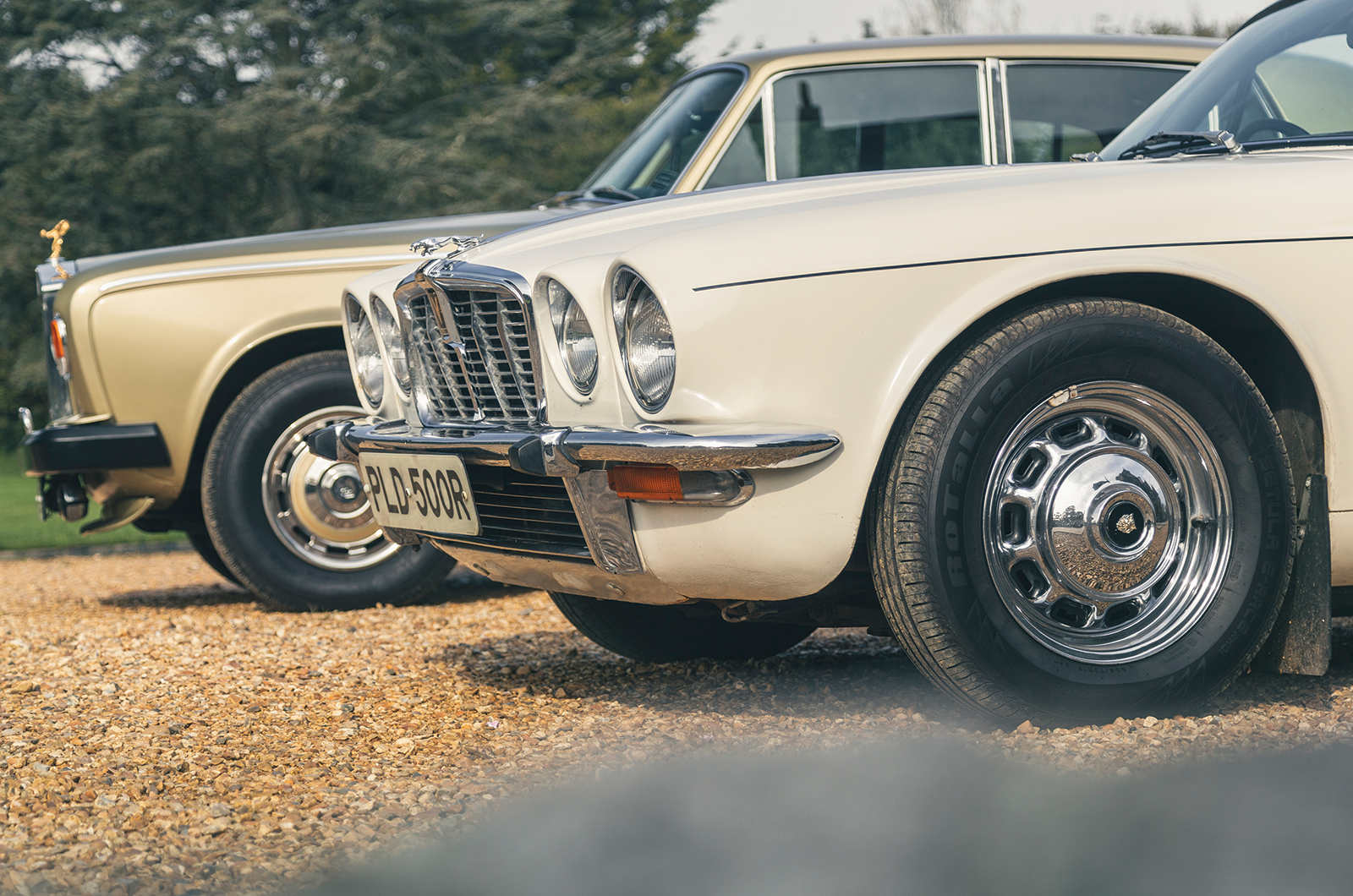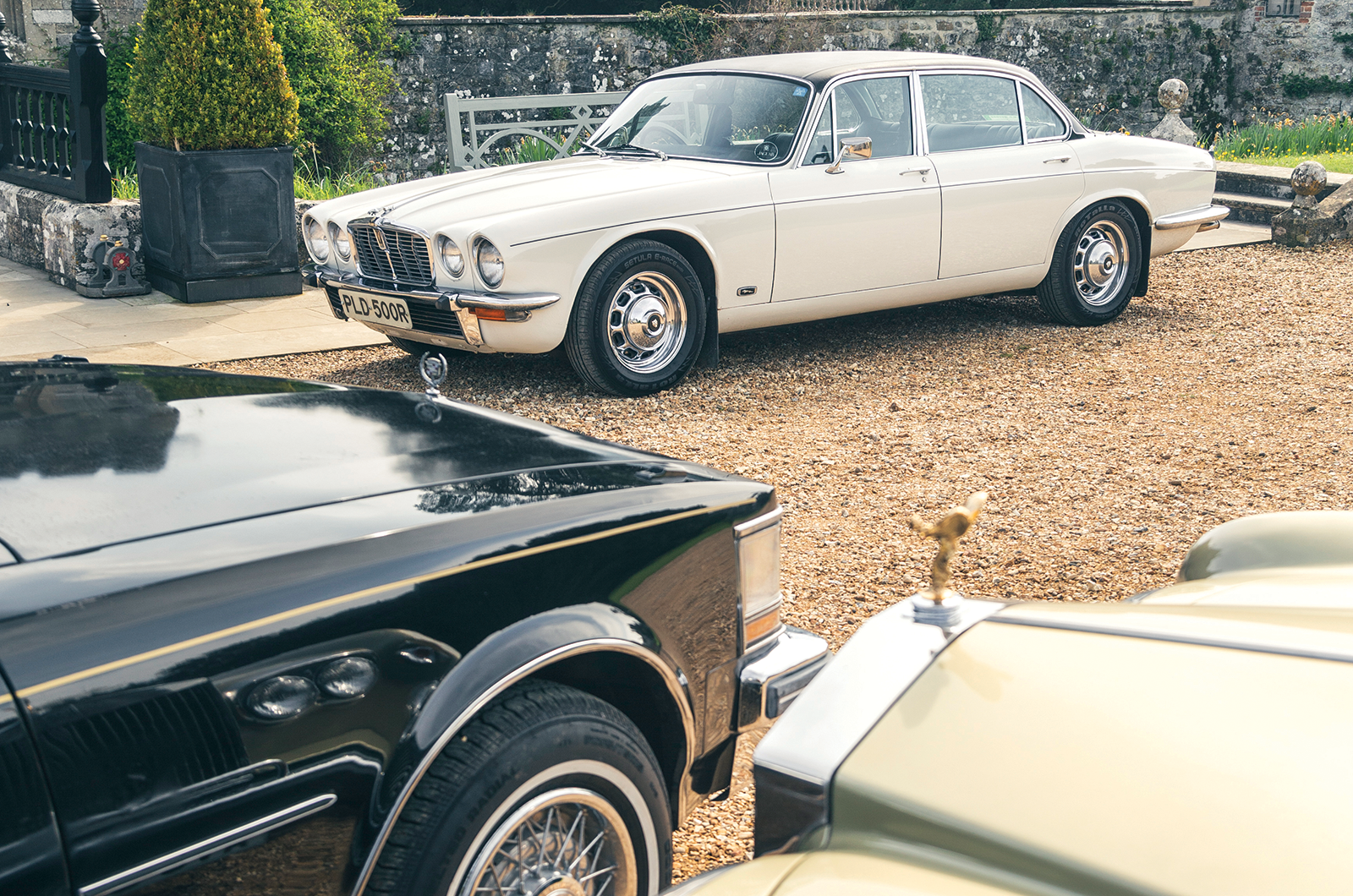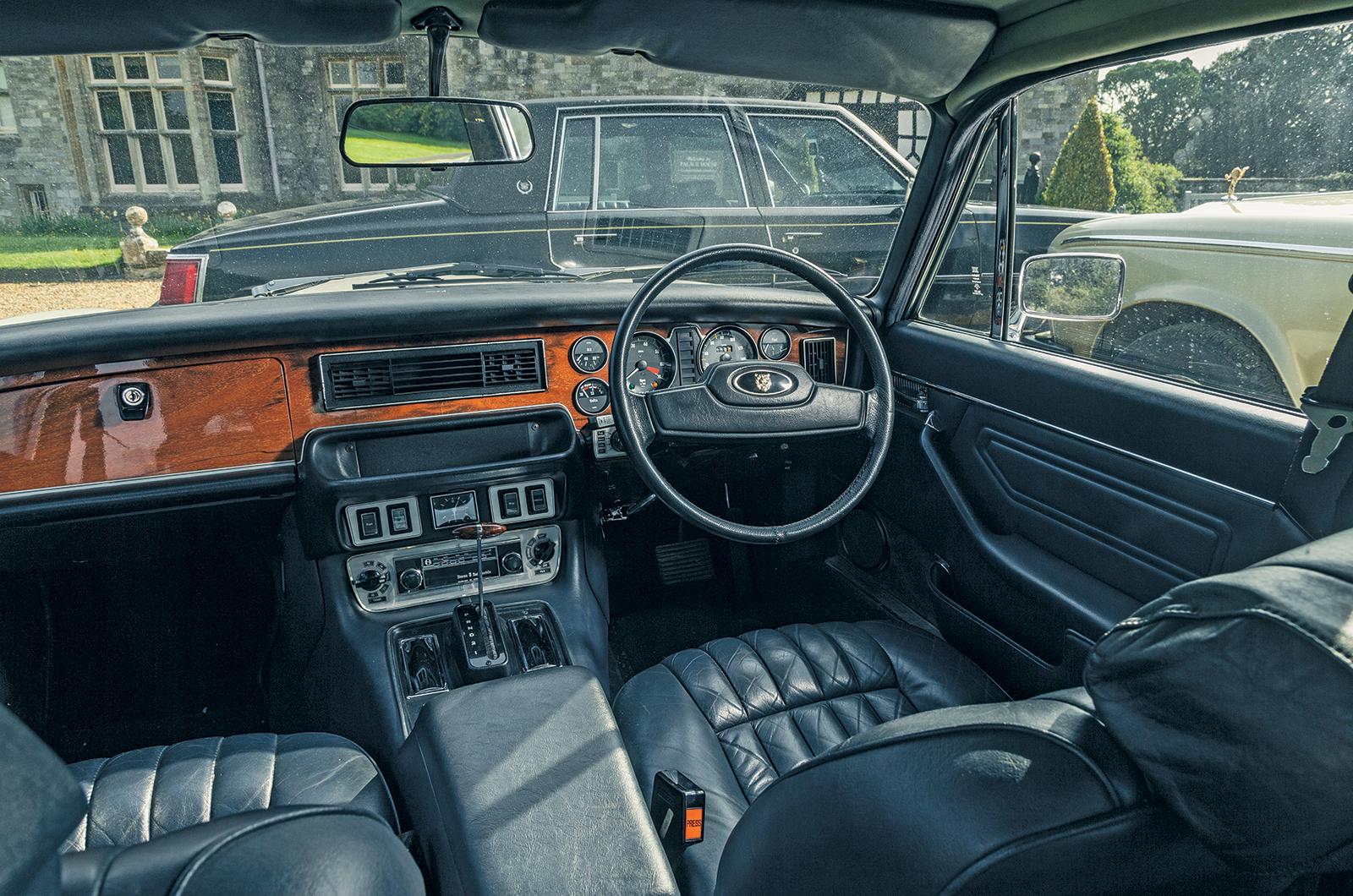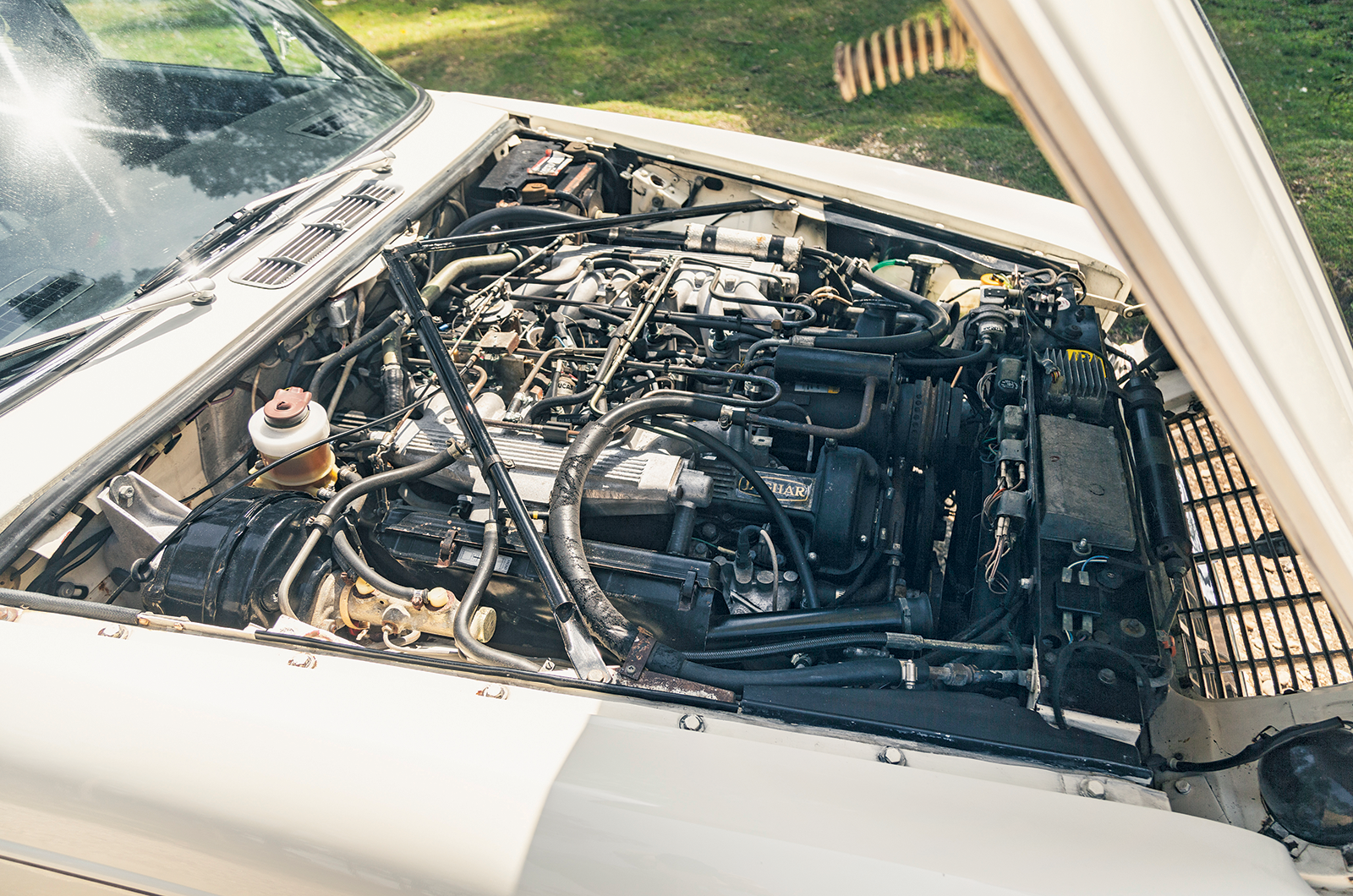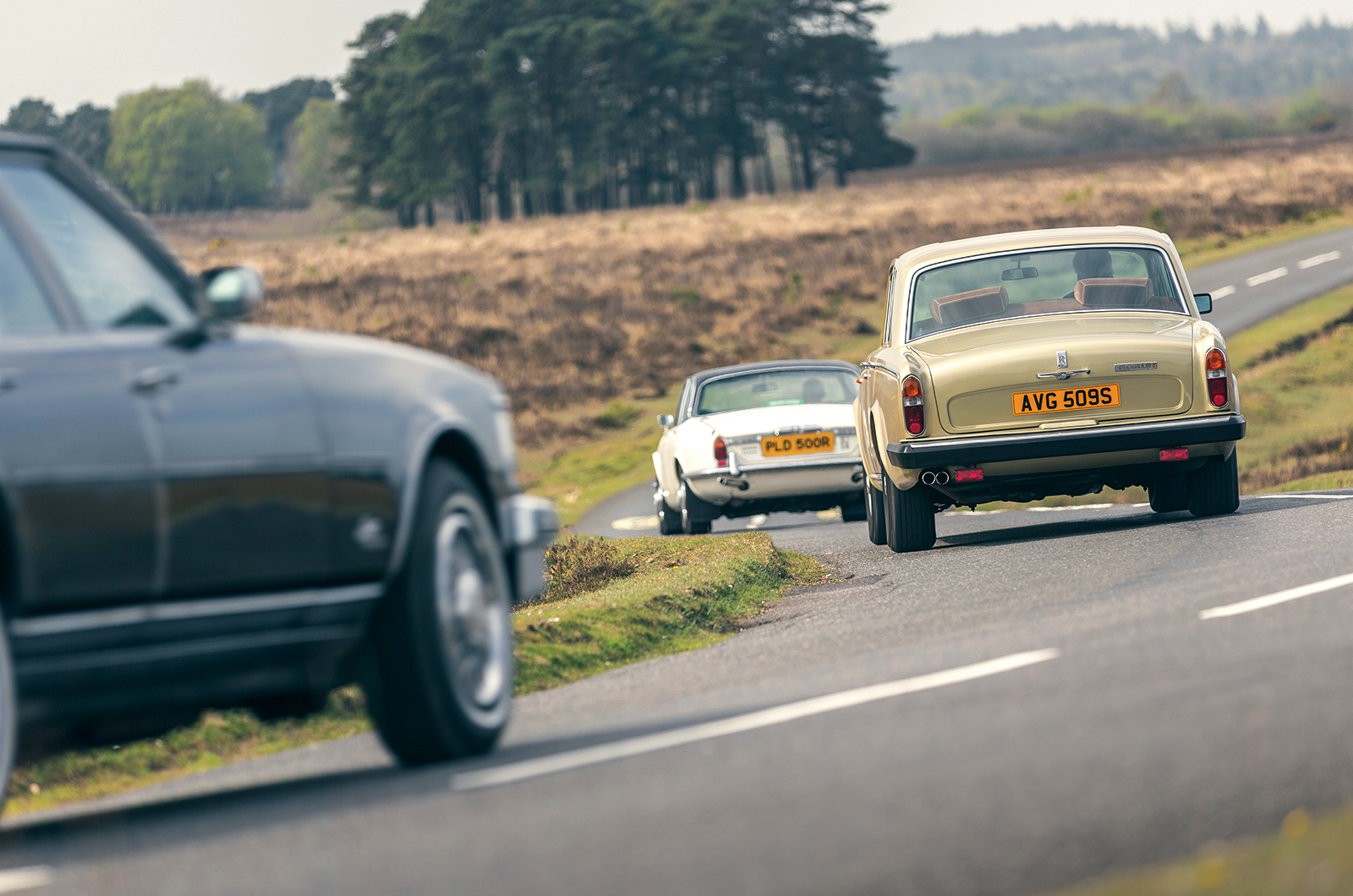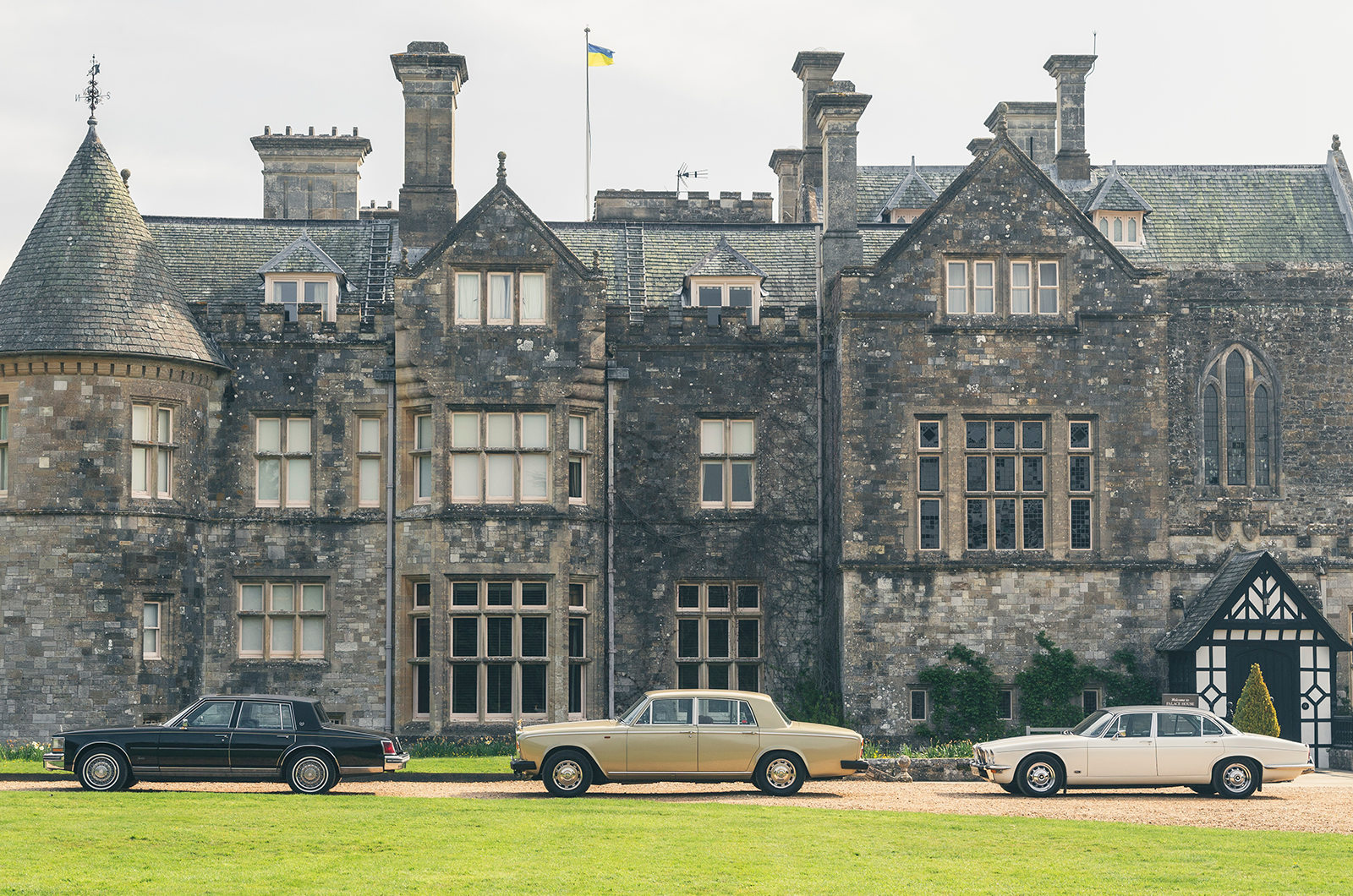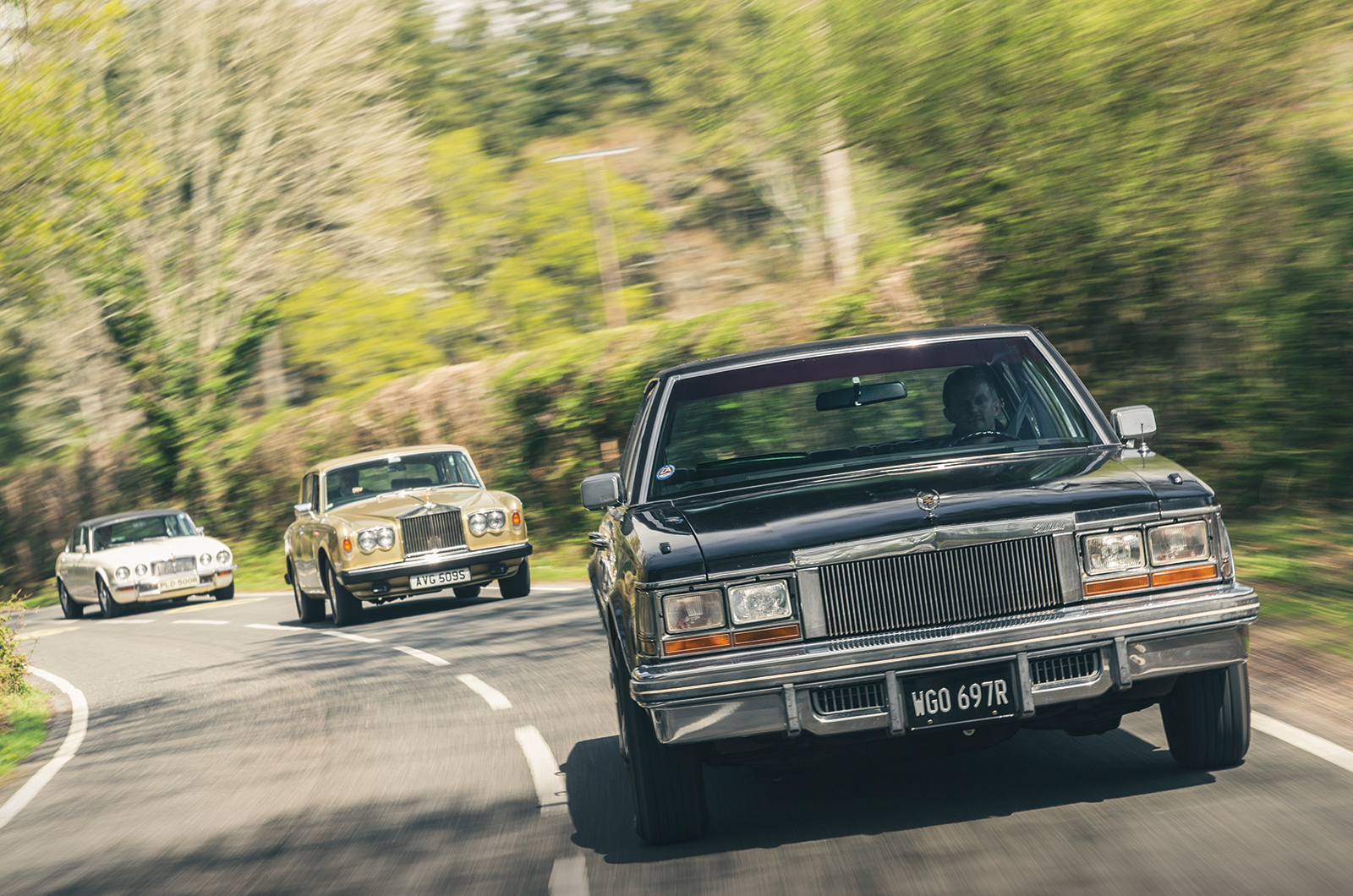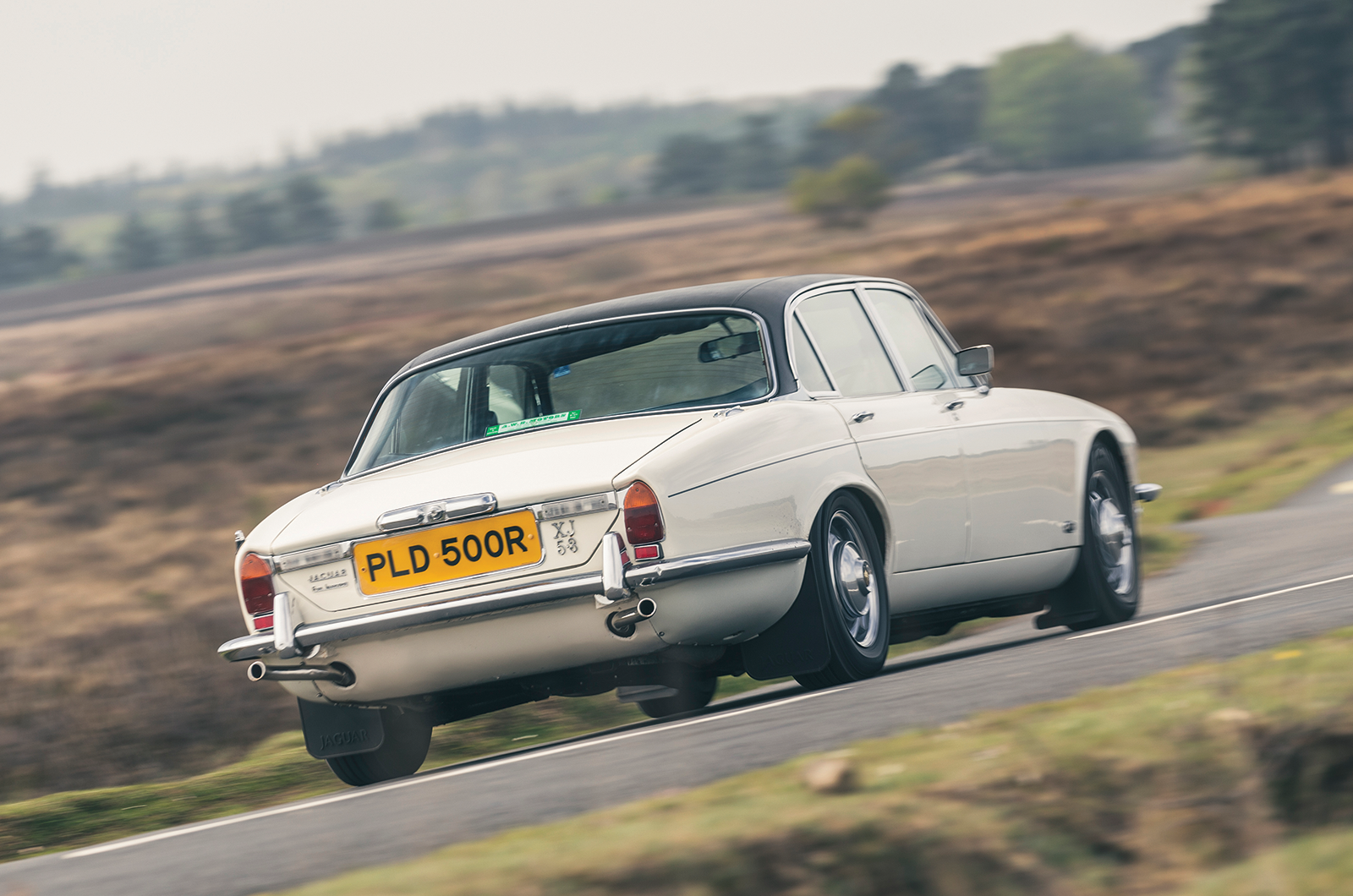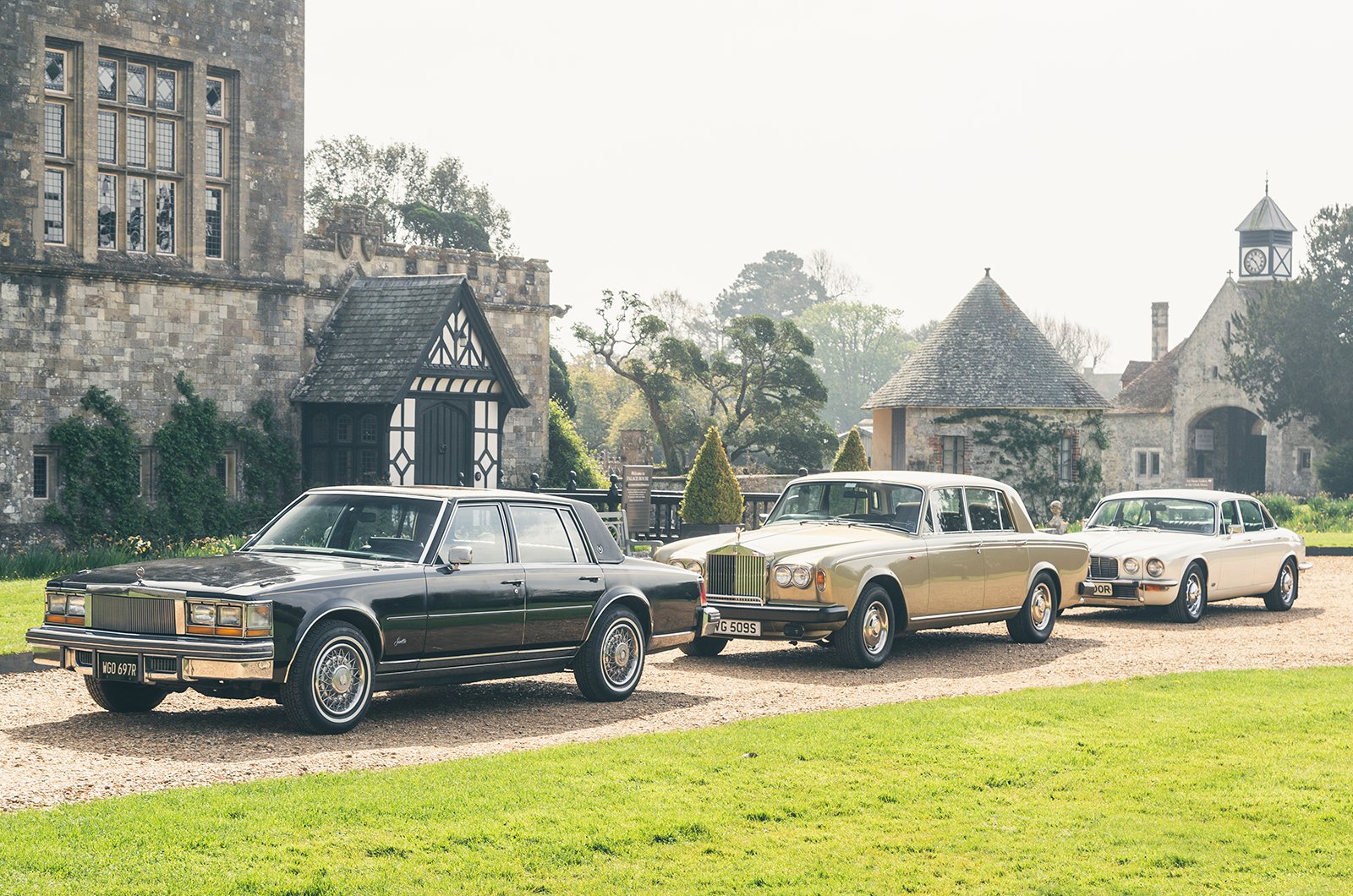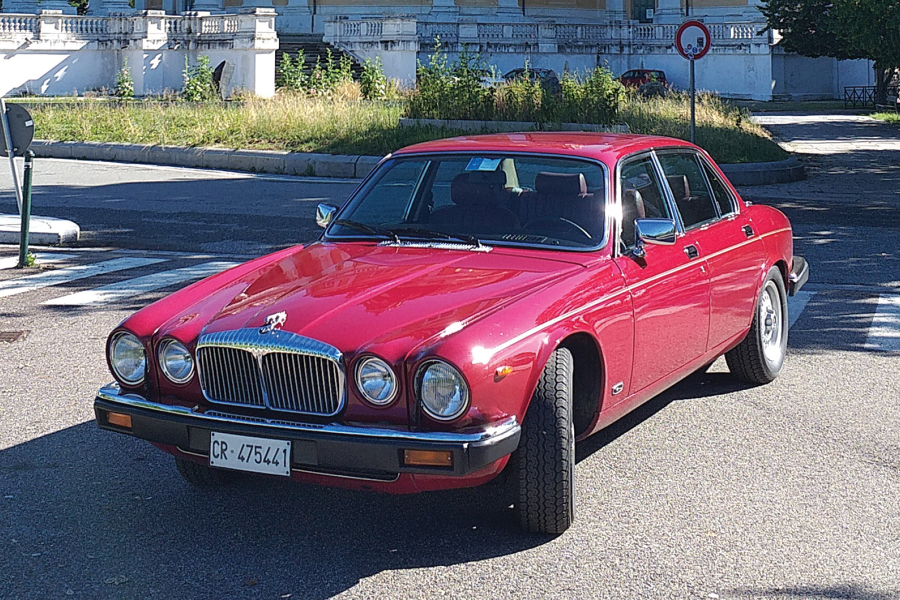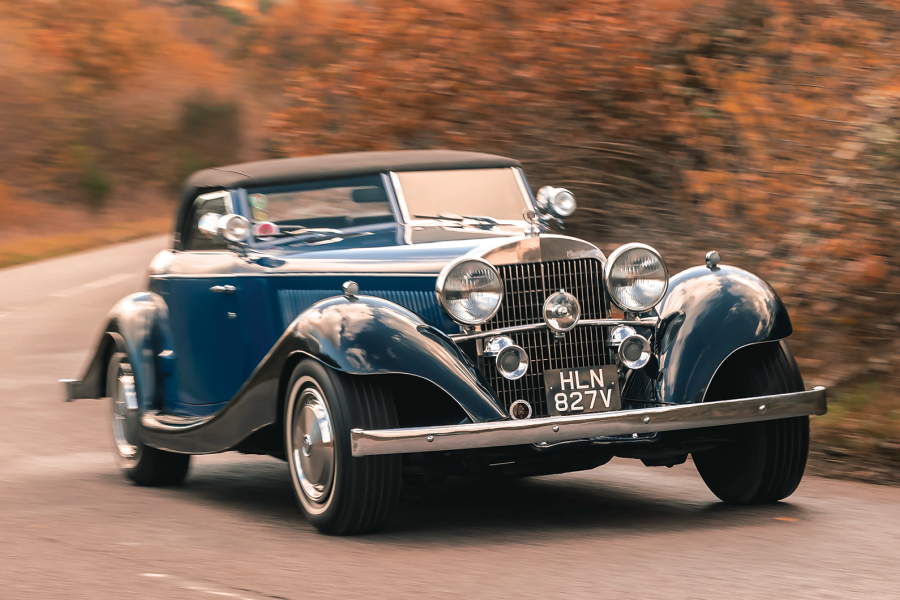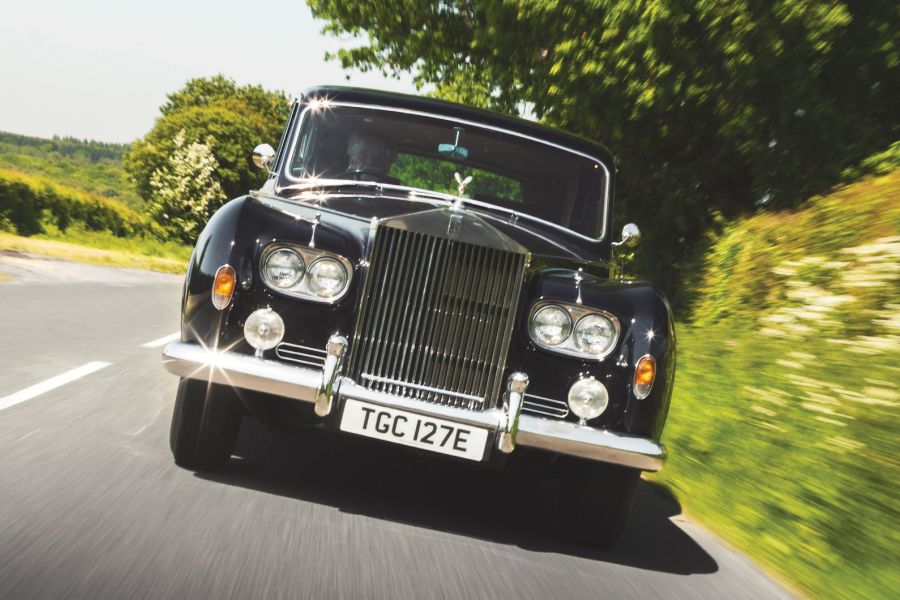The driver’s seat is low, and ergonomically it’s the best of our trio, although the mid-’70s British Leyland switchgear was always a retrograde step versus the relative classiness of the Series 1 dash.
The toy count, as you’d expect for a car costing so much less than the other two, is not quite as generous – it has climate control but no cruise, for example.
But when you start its creamy-smooth V12 and engage drive with the only floor-shifter in this group, any misgivings that the XJ might not hold its own in such esteemed company start to fade away.
The Jaguar’s 5344cc V12 engine is capable of producing 285bhp at 5750rpm
At three turns from lock to lock, its steering’s gearing is broadly on a par with the other two, but its accuracy and feedback are superior in every way; put simply, the Jag feels lighter than its 4179lb would have you believe.
Its damping and spring rates are perfectly judged, silently dismissing ruts and surface imperfections with disdain yet retaining the kind of body control that a Rolls-Royce or Cadillac driver could only dream of.
And that’s before you extend the V12 further and discover that this is a near-two-tonne rocketship.
All three cars do a sterling job of containing their respective – and not inconsiderable – weights, but while the Rolls-Royce (middle) and Cadillac (left) employ self-levelling suspension systems, the XJ does just fine without
Contemporary road-test results revealed a 145mph maximum and 0-60mph in 7.5 secs, which is impressive even 45 years on.
It does lack the low-to-mid-range clout of the two V8-powered cars, but the fact that it’s so linear in the upper reaches makes it a pleasure on the right road.
The same is true of the Rolls, although that right road would probably need to be taken at a slower pace to appreciate the car’s abilities.
The dignified Cadillac Seville (left), Rolls-Royce Silver Shadow II (middle) and Jaguar XJ12 LWB parked outside Beaulieu’s Palace House
Weighing 671lb more than the XJ, the Shadow’s sheer mass pulverises surface irregularities into submission, and sitting so high isolates you from what the road wheels are doing, which is exactly as you’d expect from a Rolls-Royce.
But pick up speed on undulating New Forest roads and the Shadow feels more out of its depth, its body developing a slow-motion heave that can easily be made worse if your steering inputs aren’t gentle enough.
Yet that’s not what this car is about. Lope along at 50mph and its rolling refinement is second to none. It has an air of indifference with which the other two can’t compete, and that somehow perfectly equates with the Shadow’s ethos.
That prices for all Silver Shadows are now on the rise makes the ownership proposition even more compelling.
The Cadillac (front) delivers exceptional ride comfort, even against the Rolls-Royce (middle) and Jaguar
Could the Cadillac ever hope to compete? If you set aside cabin quality for a moment, you might be shocked to hear that the Seville is a better driver’s car overall than the Shadow.
Its ride comfort is quite exceptional and, once you become accustomed to the ridiculously light steering, it clings on gamely through bends with a degree of body control that you would not expect – and I’m not even going to qualify that with ‘for an American car’.
Where the Seville falls short is in its lacklustre performance (0-60mph in 12.5 secs and 105mph flat-out say it all, really), and when you reintroduce cabin ambience to the equation, the balance tips firmly in the Silver Shadow’s favour.
Although none of these cars can be described as sporty, the XJ12 engages its driver with commendable steering feedback and finely judged damping that marries compliance with control
Were we to weight a world’s best car’s qualities in order, for many it would start with the brand, followed by the exquisiteness of the cabin and the car’s ability to waft the miles away – in which case, the Rolls-Royce takes full honours.
Throw in exclusivity and a frisson of driver appeal, as well as economic considerations, and the Caddy really does come close to meeting the Shadow head-on.
But for me, the Jaguar’s overall excellence as a complete package makes it the best car here by a country mile – and, back in 1977, the best car in the world, too.
Images: Luc Lacey
Thanks to: Lisa Alderson, Rolls-Royce Enthusiasts’ Club; Roger Kemp, Jaguar Drivers’ Club; Ben Coleman, National Motor Museum
Factfile
Rolls-Royce Silver Shadow II
- Sold/number built 1976-’80/8425
- Construction steel unitary
- Engine all-alloy, ohv 6750cc V8, twin SU HF7 carburettors
- Max power 230bhp (est)
- Max torque 300lb ft (est)
- Transmission three-speed automatic, RWD
- Suspension independent, at front by lower wishbones, upper stabilisers rear semi-trailing arms, self-levelling; coil springs, telescopic dampers, anti-roll bar f/r
- Steering power-assisted rack and pinion
- Brakes powered discs
- Length 17ft ½in (5194mm)
- Width 5ft 11¾in (1823mm)
- Height 4ft 11¾in (1517mm)
- Wheelbase 10ft (3048mm)
- Weight 4850lb (2200kg)
- 0-60mph 10.5 secs
- Top speed 116mph
- Mpg 12-15
- Price new £24,248
- Price now £15-45,000*
Cadillac Seville
- Sold/number built 1976-’79/118,400
- Construction steel unitary, with front perimeter frame
- Engine all-iron, ohv 5735cc V8, Bendix fuel injection
- Max power 180bhp @ 4400rpm
- Max torque 275lb ft @ 2000rpm
- Transmission three-speed automatic, RWD
- Suspension: front independent, by double wishbones, coil springs rear live axle, leaf springs, self-levelling; telescopic dampers, anti-roll bar f/r
- Steering power-assisted recirculating ball
- Brakes discs, with servo
- Length 16ft 12in (5179mm)
- Width 5ft 11¾in (1823mm)
- Height 4ft 6¾in (1389mm)
- Wheelbase 9ft 6¼in (2903mm)
- Weight 4243lb (1924kg)
- 0-60mph 12.3 secs
- Top speed 105mph
- Mpg 12-15
- Price new £14,888
- Price now £8-15,000*
Jaguar XJ12 LWB
- Sold/number built 1973-’79/14,226
- Construction steel unitary
- Engine all-alloy, sohc-per-bank 5343cc V12, Lucas fuel injection
- Max power 285bhp @ 5750rpm
- Max torque 294lb ft @ 3500rpm
- Transmission three-speed automatic, RWD
- Suspension independent, at front by double wishbones, coil springs, telescopic dampers, anti-roll bar rear rubber-mounted subframe, lower wishbones, trailing radius arms, twin coil/damper units
- Steering power-assisted rack and pinion
- Brakes discs, with servo
- Length 16ft 2¾in (4945mm)
- Width 5ft 9¾in (1770mm)
- Height 4ft 6in (1371mm)
- Wheelbase 9ft 4¾in (2865mm)
- Weight 4179lb (1895kg)
- 0-60mph 7.5 secs
- Top speed 145mph
- Mpg 13-18
- Price new £9429
- Price now £10-15,000*
*Prices correct at date of original publication
READ MORE
Glamour models: Mercedes-Benz 280SE 3.5 Coupé vs Rolls-Royce Silver Shadow MPW
Glitz and clamour: Jaguar XK140 vs Ford Thunderbird
Rolls-Royce Silver Cloud III vs Cadillac Series 62: the sky is the limit
Simon Hucknall
Simon Hucknall is a senior contributor to Classic & Sports Car
